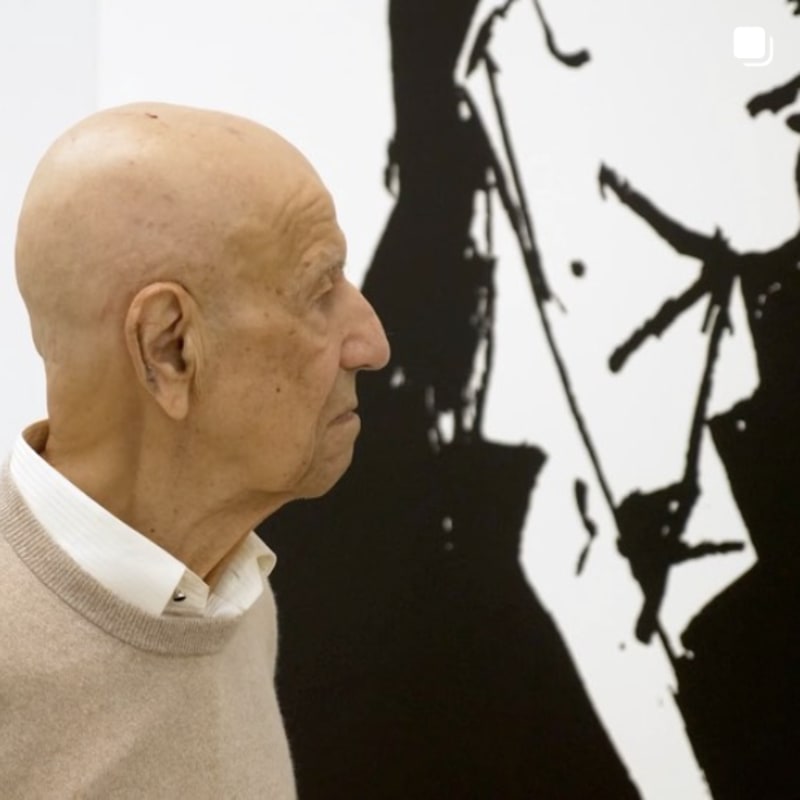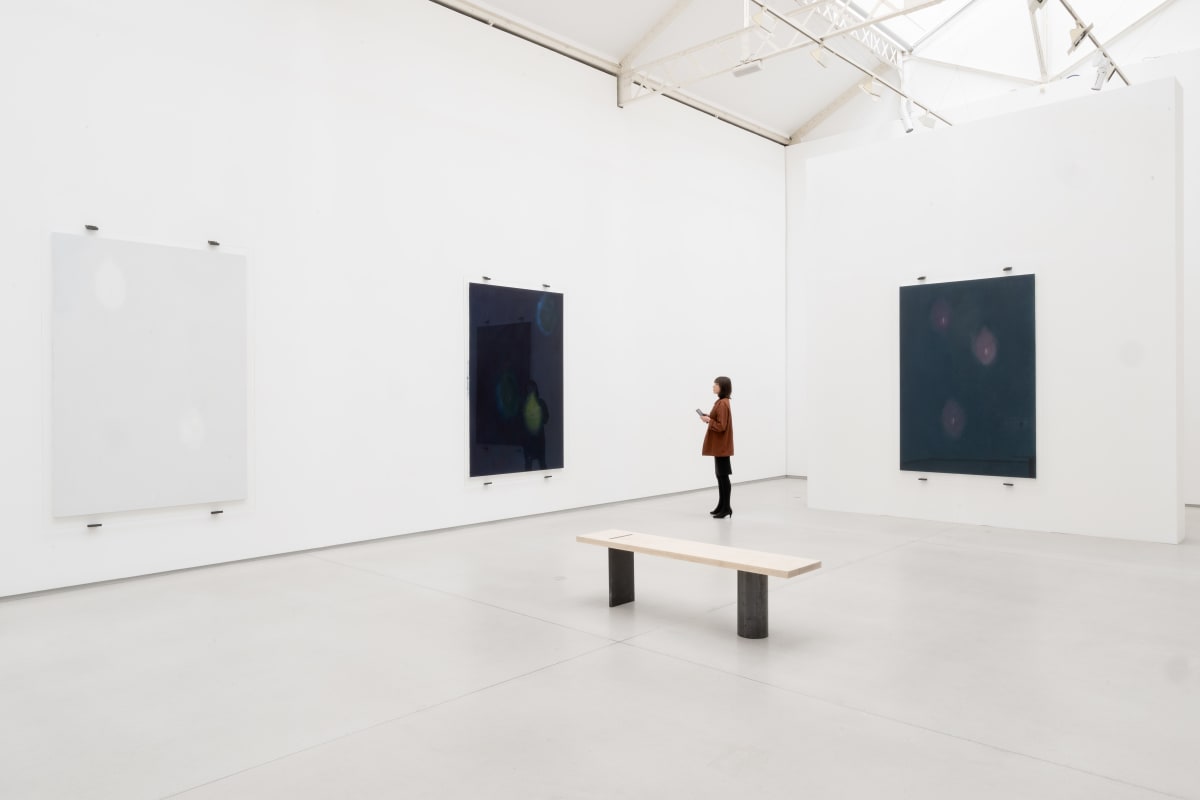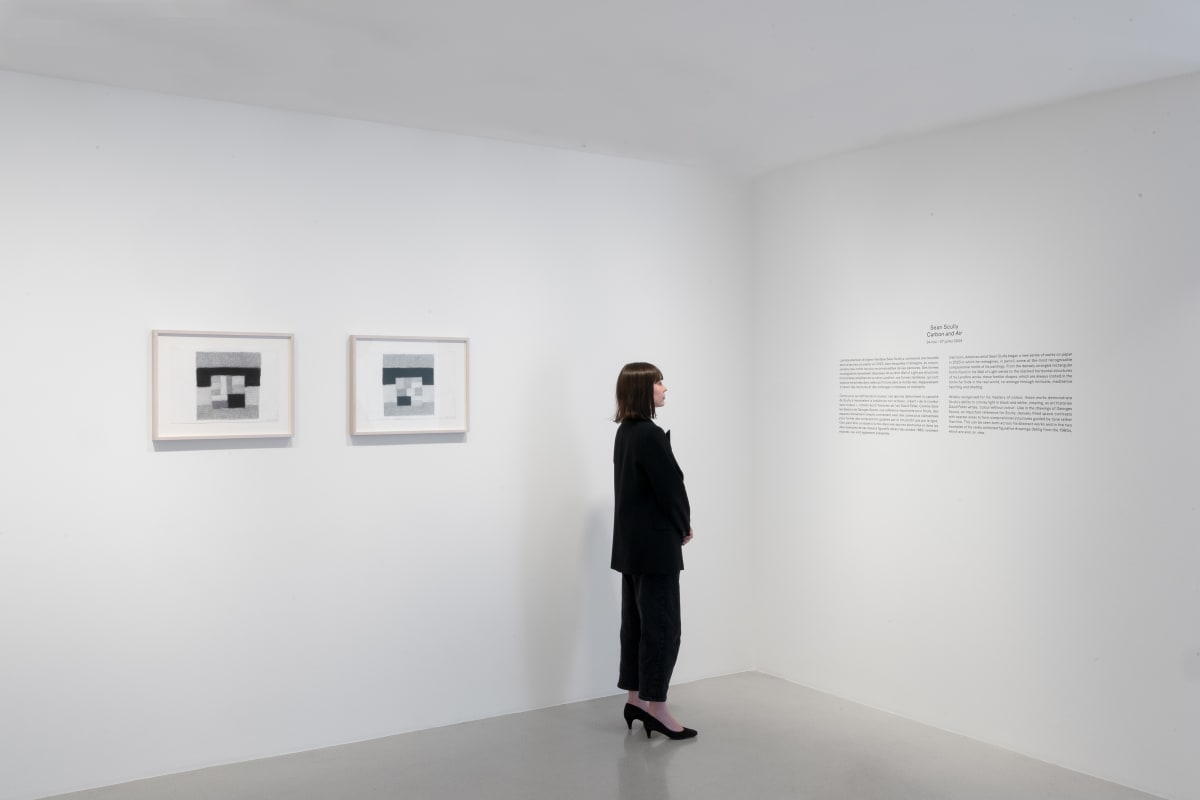Alex Katz: six ramps of a painter’s progress
At first the prospect of an Alex Katz retrospective at the Guggenheim Museum did not rest easy on my mind. Katz’s paintings include billboard-size heads and towering canvases of trees that are either startlingly patched with bright color or cosseted in layers of shadow.
The bays that divide the Guggenheim’s big spiral ramp are small, low-ceilinged and they tilt. The structure was designed to showcase the crème of early European modernism: modest, abstract easel paintings. Unsurprisingly, the place is not known for surveys of American figurative painters.
But there was no need for worry. Alex Katz: Gathering, which opens Friday, is an example of art and architecture equally rising to the occasion. Katz’s achievement more than survives in this setting; it thrives. In so doing it offers further evidence of the evolving versatility of Frank Lloyd Wright’s spaceship.
The show’s 154 artworks — 75 often large canvases, accompanied by around 79 tiny collages, oil studies, prints, drawings and painted-aluminum figurative cutouts — have been carefully selected and installed by the curator Katherine Brinson to take full advantage of what the spiral does best: tell a simple chronological and increasingly revelatory tale. It shows us talent, determination and individual sensibility being molded into great art and maintaining its momentum over time. This is what a retrospective should do, and Katz’s work does this with extraordinary clarity, almost transparency. It should give everyone, especially artists, hope.
As titles go Gathering may at first sound kind of corny, but it is broadly and complexly apt. It suggests the gathering of light (or dusk or night), one of Katz’s chief subjects, perhaps his main one. It also suggests the social gatherings of people, which he has often painted, drawn from the circle of painters, poets and dancers with whom he was closest, although his most frequent model is his wife, Ada Del Moro, a scientific researcher, whom he married in 1959.
Then there’s the gathering of drawings and oil studies with which Katz plots his large paintings on linen to achieve the sense of painted-all-at-once spontaneity of his smaller ones. And don’t forget the Guggenheim’s present gathering of Katz artworks, which forms an exhibition spanning nearly 80 years of painting full time.
At 95, Katz is one of the most singular painters in American art, a card-carrying believer in the postwar New York School of Painting, but one who disdained to join or was excluded from its blue-chip elites — Abstract Expressionism, Pop, Minimalism, Color Field. Nonetheless he absorbed aspects of all of them, sometimes before they formed. He was a loner, never part of the Castelli Gallery crowd nor an anointed art star in the manner of Jasper Johns, Andy Warhol or Frank Stella with high auction prices, secure art-historical niches or fawning acolytes.
The show unspools up the ramp like a film with each bay functioning as a frame or two, tracing the development of one of the longest, most productive careers in American art.
One of the earliest works on view is a painted portrait of the artist’s mother, Sima Katz, an actress. Its title Ella Marion in Red Sweater recalls the stage name she used as a Russian-born star of Yiddish theater. He painted it in 1946, when he was 19 and just starting his studies at Cooper Union. As you rise through the spiral to the present, the paintings rise too. The scale enlarges, the colors brighten and Katz turns more and more to nature, as the show culminates on the museum’s uppermost ramp and high-ceilinged tower gallery. Katz’s recent landscapes dominate, translating some combination of sky, tree, building, water, grass or pavement —- and always light — into moments of ecstatic perception followed by recognition: the joy of looking and seeing, and then knowing. These last paintings are all but abstract and give the show’s finale a certain headiness, and movement, as if the atrium’s rose-window skylight might simply lift up and float away.
Katz was born in Brooklyn in 1927 and raised in St. Albans, Queens, in a bohemian household. His mother was a devoted reader of poetry. His father, also Russian-born and also in the theater, was “cultured, but never ostentatiously,” Katz wrote in Invented Symbols, his 2012 ‘‘art autobiography.’’ He started drawing with his father and grew up knowing that his family was different. For one thing, they all, but especially his father, frequently painted and repainted the rooms of their house with unusual colors. In the memoir, Katz remembers a pink sunroom punctuated with small dark red triangles. But at a certain point it became too much. Katz painted his bedroom beige with brown trim. “I was trying, trying, trying to do something ordinary,” he wrote. “Everything in our house was so damn bizarre.”
The show reveals that most of the components of Katz’s mature work were apparent early. They just needed to be fit together and amplified, a process spurred by the art and artists he encountered as he made his life in New York. The 1946 portrait of his mother — her hands supporting her chin, her level gaze, the geometry of the sweater, table and background — is a Katz in waiting. Sketches of subway riders from the notebooks of this period prove that his knowledge of the figure was already complete.
In the late 1940s Katz had two transformative experiences. He fell in love with the light of Maine during two summers at the Skowhegan School of Painting and Sculpture, and was soon spending every summer in the coastal town of Lincolnville. And in the face of Jackson Pollock’s paintings, he was galvanized by their scale, direct execution, allover energy and materiality. These were all things he wanted for his art, but without joining the Abstract Expressionist bandwagon.
He wanted to paint representationally in a contemporary way, open to the smooth aesthetics of movies, advertising billboards, and the latest fashions — as indicated by the The Black Dress from 1960, which shows Ada Katz wearing it in six different poses, as if following her through a cocktail party. As he wrote in his autobiography, his main interest was in “empirical sensations — painting the outside world. I couldn’t figure out a way to do it yet. I wanted to bring it into modern art.”
He would find his own way. He insinuated Pollock’s all-overness into Apple Trees (1954) with daubs of color and scratchy lines for trunks and branches. In 1955, and for the next few years, Katz confronted the bigness and flatness of Abstract Expressionist painting by going small, in a series of tiny collages in watercolor and colored paper depicting the fields and shorelines of Maine. Their distant horizons, vast skies and isolated signs of human activity still feel startlingly radical. Brinson quotes Katz telling an interviewer that the collages were “the first time I knew I was making art.”
The confidence and economy of these collages, such as Untitled (At the Seashore”, become Katz trademarks. They generate the flat muted backgrounds against which he isolated his first portraits of family and friends standing or seated, singly or in couples, from 1958-63, like Paul Taylor. They spawn more complex landscapes including the mysterious, Munchian Luna Park of 1960. They inspire more sophisticated, sharply rendered combinations of figure and ground like The Red Smile — Ada as sleek billboard (1963). And they provide the backdrop for many of the Maine pictures to come, like Vincent and Tony of 1969.
The middle section of the show is full of many wonderful, often great paintings, but it covers ground similar to that of Katz’s 1986 retrospective at the Whitney. Afterward he felt the need for something different and began concentrating on Maine landscapes and New York cityscapes — their light, their weather — while making his paint surfaces faster and looser, as in the 1950s, and in spots, shocking in its physical protrusion.
The daring results of these decisions fill the museum’s uppermost level, pushing the definition of both painting and representation to their limits, challenging us to understand them and tosee what Katz saw. Tree is garish, ablaze with orange and turquoise and seemingly devoid of spatial logic. Blue Tree 2 looks at first hyper real, until you realize that its stark, sun-baked trunk is just a husk of wide, lightweight brushstrokes. Blue Night is nearly monochromatic: a massive black form — a tree-covered hillside? — emerging from deepest blue.
In Fog, big, fat pale gray-on-gray lozenges present themselves as outsize leaves or pine branches. And in the awesome Black Brook 16, nearly 30 feet long, horizontal and vertical clumps of paint in several tones of dark green and gray make it impossible to tell solid from reflection, up from down, large from small.
There are very few portraits here, most notably one of Ada Katz, her hair streaked gray and white, seen from the back. These paintings, which emphasize mortality, can seem tragic in bearing, but they are a cause for joy, the late works of a remarkable artist that make him even more so.













































































































































































